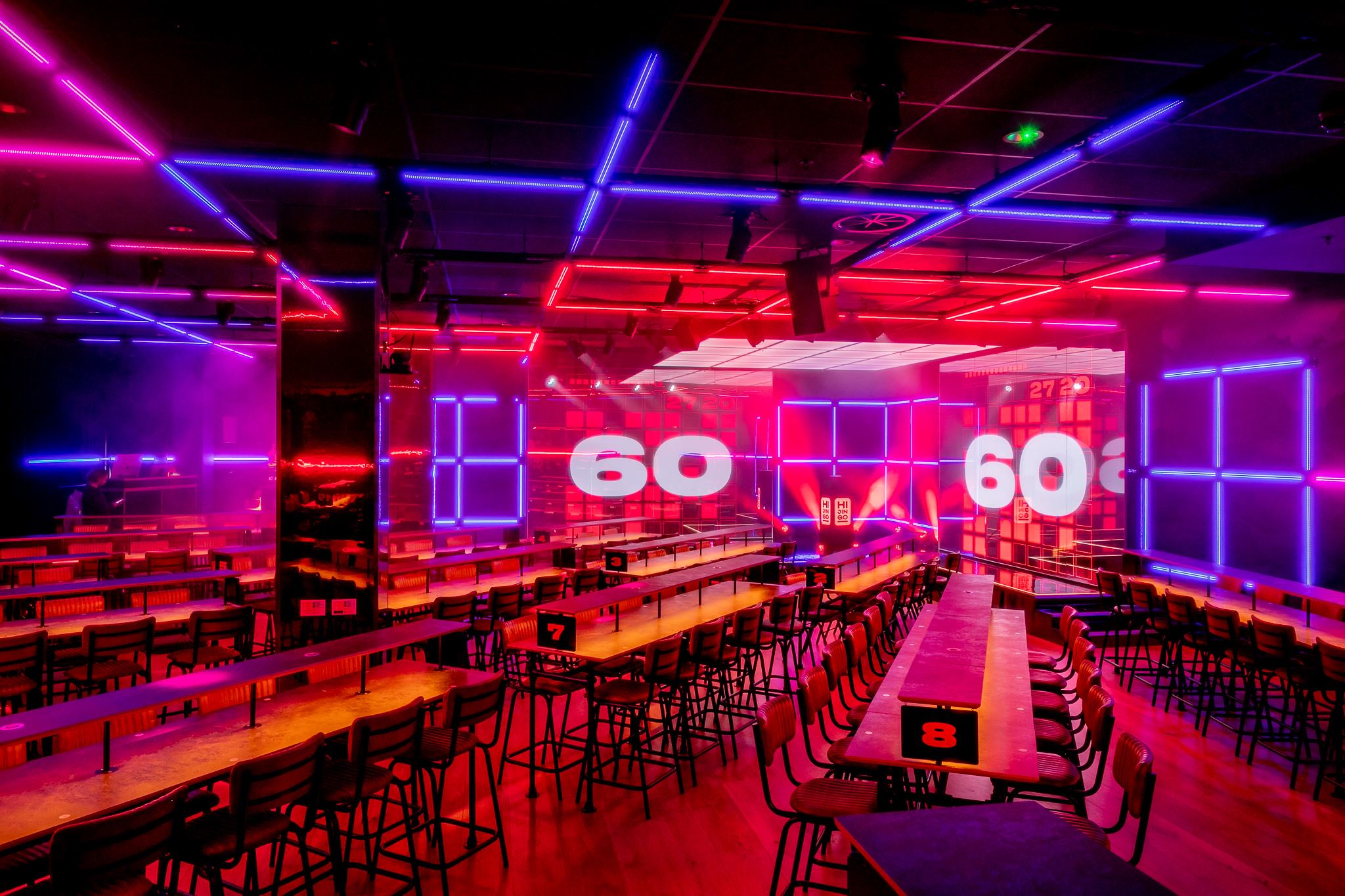Kick, bounce, swing. Roll, throw, twist. Win, lose, and draw… it’s no longer enough just to go out to eat and drink with friends. Like so much of modern life, socializing has been gamified.
The concept and business model are simple:
- Pick a game – preferably an old one that everyone understands.
- Update it with new technology.
- Serve it with an Instagrammable backdrop and great F&B.
- Watch the Millennials (and others) roll in. 😊
Sidenote: it all looks simple and obvious in hindsight, right? But that doesn’t mean the path was easy for the pioneers who made the leap and built this new form of socializing.
A handful of key suspects:
- Crazy golf / mini golf: Swingers, Puttshack
- Darts: Flight Club
- Ping-pong: Bounce Leisure Ltd
- Table football: Kick, Metrix from WallJAM, TOCA Social
- Board games: Monopoly Lifesized from The Path Entertainment Group
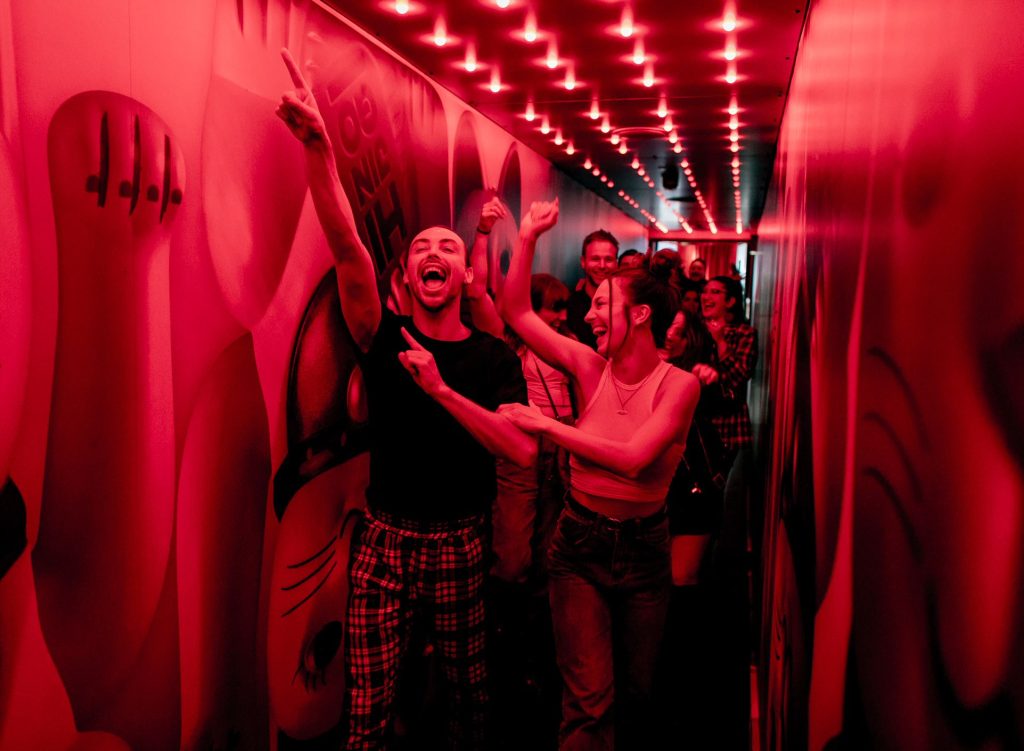
Is Competitive Socializing The “New Escape Room Trend”?
There’s something here that reminds me of the rise of escape games in the mid 2010s. For example:
- The speed of the take-off
- The ready pool of eager consumers
- The flexibility for venues to work for B2C and B2B markets: owners can work their asset during the workweek as well as during traditional leisure times
- The economic model works, hence so many players jumping into the market
Why Competitive Socializing Is Different
There are differences too.
1. It’s Not The Same Audience: Competitive Socializing Went Mainstream Fast
Everything begins with the freaks and the geeks – the crazy innovators who’ll try anything, as long as it’s new. And yes, escape rooms made the jump to mainstream people like my Mum doing them. But I suspect the competitive socializing market jumped to the mainstream much quicker.
2. Escape Rooms Don’t Understand The Value of Time
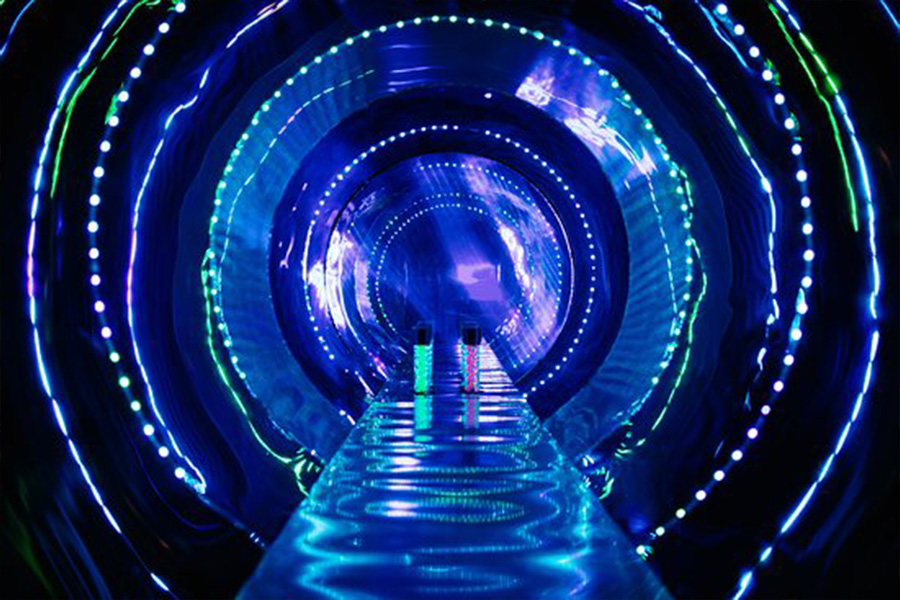
Escape room creators focus on throughput. Competitive socializing creators focus on dwell time.
Escape rooms want to get you in, have the game, get you out the other end. The reflection is a moment of congratulations, a photo for Facebook, and then you’re off for the rest of your day/night – and spending your time and money elsewhere. That’s a mistake, from a revenue point of view.
It’s a truth of the Experience Economy that time = money. Starbucks, as Joe Pine and Jim Gilmore showed in their seminal work, figured out that the more time people spend, the more money they spend.
Escape room owners could learn a thing or two about that. Where’s the dwell time? Perhaps the problem is the name, and the mentality of the escape room operators? ‘We want people to come here, and then escape.’ But that means the escape room’s share of wallet evaporates with every person who leaves so soon.
Secondary thought: what if an ‘escape room emporium’ surrounded the escape room with F&B? Consider how Monopoly Lifesized works: come for the game, then go directly to the restaurant or bar…
3. The Economics Of Competitive Socializing Are On A Different Level
In the old days, you could pull an escape room together for $30,000-40,000. But because of limitations on throughput, there are limits to the amount of revenue these generate.
The answer, for some, lay in the tried-and-trusted economies of scale and cookie-cutter model: design an escape room in one place, and roll it out around the world. Hence Escape Hunt floated on London’s Alternative Investment Market for £14m in 2016. (WXO Co-Founder Musty Omar advised on this.)
Compare that starter price to a competitive socializing venue: the original Swingers in London cost £500,000 to create.
So competitive socializing venues require more upfront cost, therefore higher risk, but that’s worth it because the returns are much higher. So while the trend may be just as scalable – individual success stories are much more scalable. So competitive socializing brings in higher level investors, generate much higher revenue – and lead to higher valuations.
Let’s Start At Very Beginning: Who Started the Competitive Socializing Trend?
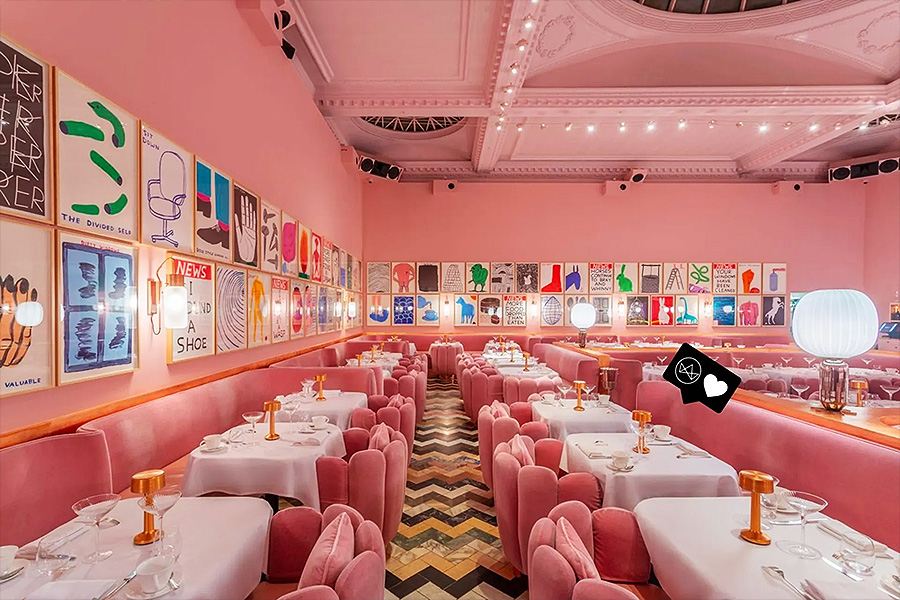
Like so many trends, there’s nothing new here, except for the packaging. Consider golf or football or darts or netball: the competition always came with socializing. And, as Jim Barksdale said, there’s only two ways to make money: bundling and un-bundling. What’s happened here, of course, is the bundling of one activity with another.
Some say that Kevin Williams and his weekly e-newsletter, The Stinger Report, popularized the term “competitive socializing”. He says “is a blending of a hospitality atmosphere married to a re-imagining of conventional competitive entertainment.”
This is different to “eatertainment”, which veteran leisure venue designer and competitive socializing expert Randy White notes “only denotes a venue that offers both entertainment and food and drink, not necessarily one that combines the two into a single experience”.
“When a large segment of consumers, including most millennials, choose a restaurant, they are looking for “a new experience”… they are really looking for experience-based social environments that incorporate food and drinks combined with experiences such as a game night, live entertainment, or social games.”
Randy White, White Hutchinson
Randy offers some stats supporting this:
- 42% of millennials are influenced by a restaurant’s entertainment offerings when choosing where to eat, according to a survey by restaurant tech firm TouchBistro
- More than 50% of consumers say they are very interested in revisiting an eatertainment experience, according to a survey by F&B insights firm @Dataessential
F&B Is Key
F&B is, of course, an essential ingredient.
- F&B Brings People In
32% say new and better food options would motivate them to visit eatertainment venues more often, showing that the food and beverage is an essential driver of repeatability.
- F&B Makes Money
The “food and beverage revenues exceed that for the entertainment in most socialized gaming venues”, Randy White wrote in October 2022.
F&B accounts for almost half of revenues. “For Junkyard Golf and Puttshack F&B income accounts for 45–50% of income.” according to a report by Tom Whittington at real estate firm Savills.
Why Is Competitive Socializing Taking Off? And Why Now?
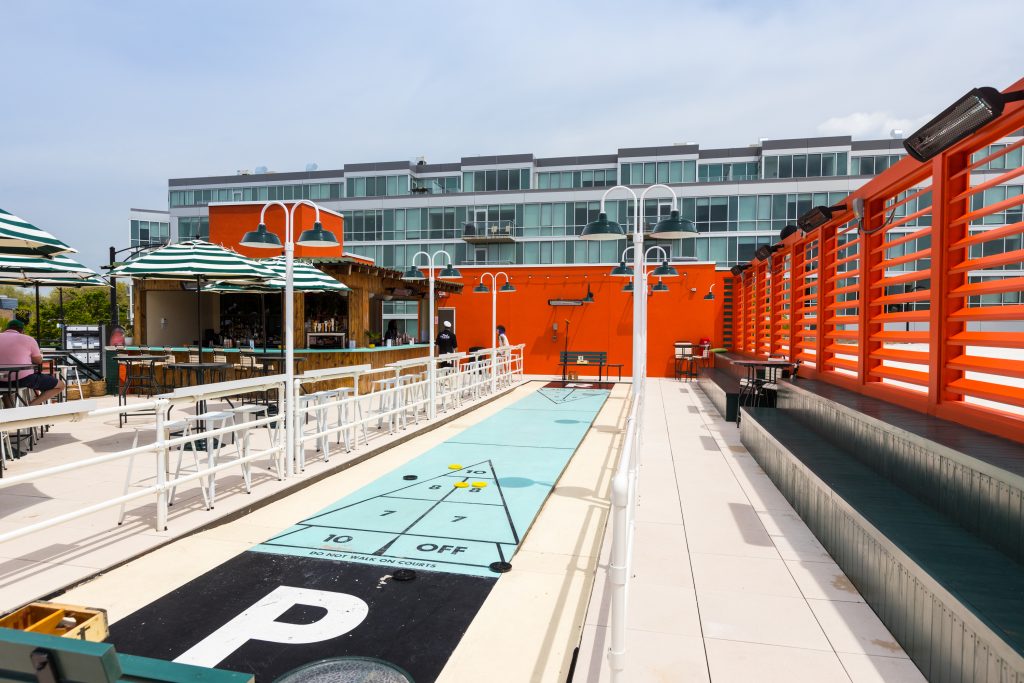
There are new and old reasons from both the demand (i.e. what consumers want) and the supply side (i.e. what producers create).
1. Phono Sapiens
24/7 social connections… Sharing a pic of me and Jill in the pub isn’t very interesting. Much better to share a pic next to a windmill.
2. Post-Pandemic Bounceback
Now we’re allowed out again. Is it enough to go to a pub?
3. Evolution Of The Experience Economy
Just as innovation has made shoes and modes of transport different, more varied, and better over time, the ever better, creative-destruction of capitalism is playing out in the Experience Economy too.
4. Connected World
Ideas spread faster than before. Especially good ones that make money and make people feel more alive.
5. MARS
Combine Edward Deci and Richard Ryan’s Self-Determination Theory with evolutionary psychology, put them into an easy to remember mnemonic, and you can quickly see what people want: Mastery, Autonomy, Relatedness, and Status. Competitive socializing provides all of these. You might combine this with modern neuroscience and observe the neurotransmitters that appear during competition and socializing: oxytocin, dopamine, and adrenalin.
Is The Competitive Socializing Market Here To Stay?
Given the strong psycho-social and socio-economic factors that support competitive socializing, I think this is a structural rather than cyclical trend – that is, it’s here to stay. Competitive socializing has fundamentally changed how we socialize.
(And its potential has only just been tapped. Why not create a competitive socializing venue that teaches history?)
A few signs that we’re already here:
- 32% of the leisure market is now rented by competitive socializing tenants, according to real estate firm JLL
- 41% of Gen Z Britons have been to competitive socializing venues, 47% would like to go the future; 29% of Millennials have been before, 60% would like to go in the future, according to research by KAM Media
Similar & Sub-Sectors: LBE, Sports, Eatertainment, Escape Rooms
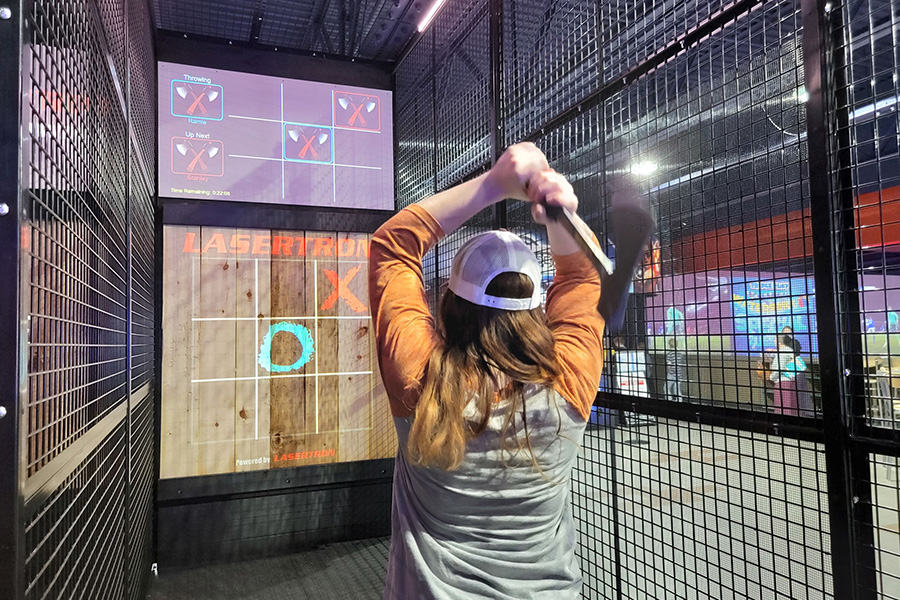
Some argue that ‘true’ competitive socializing venues contain a number of key ingredients in the game:
- very approachable
- high-repeat appeal
- analogue interactive games – that are often technology-enhanced
See New York-based Lazertron’s approach to axe-throwing:
- played by a small group of people who don’t have to be experienced players
- the competitive element is light-hearted and not taken seriously.
There’s also a difference in terms of the F&B on offer, and when you consume it. In competitive socializing venues:
- they serve ‘trendy’ [love that word 😉], high-quality food and beverage
- the players usually drink, and sometimes eat, while the games are being played
So this POV suggests a subset of competitive socializing types…
- Location Based Entertainment / LBE
The focus here is on providing the sort of entertainment you could get at home, but via the even better OOH (out of home) version. Nowadays this means a lot of (incredible) VR and also AR, like Chaos Karts.
- Athleisure Entertainment
Borrowing from the name of the fashion trend for athletic leisure wear, this is where people can become better athletes in their leisure time, eg, TopGolf, Metrix.
Let’s not forget escape rooms either. They’re here to stay. And evolve – witness the new ‘bouldering meets escape room’ concept at City Bouldering.
Then there are the innovations that don’t yet fit a trend…
- Gameshow Studios – opening Feb 2023.
- Phantom Peak – opened Aug 2022.
- Hijinx Hotel, Sydney.
Side Note: Boundaries Blur When Innovation Blooms
Just think about the innovation in shoes in recent decades. Is that shoe for road running, trail running, hiking, working, dancing, looking your best? As shoe innovators have blurred the boundaries of our footwear, so today’s experience innovators are blurring the boundaries of experiences.
A Punchdrunk experience has game elements to it: you want to see as much as possible, put the pieces of the puzzle together. A Secret Cinema experience often contains game elements. Their Arcane in LA deliberately used team and game elements, and even hired an escape room designer for some sections. And then there’s Phantom Peak – immersive theatre, or a game? Or gamified immersive theatre?
We will only know properly when we look back. But for now we can try to categorize, and accept that some things just fit in two categories, and that’s OK.
Six Of The Best Examples
1. Swingers
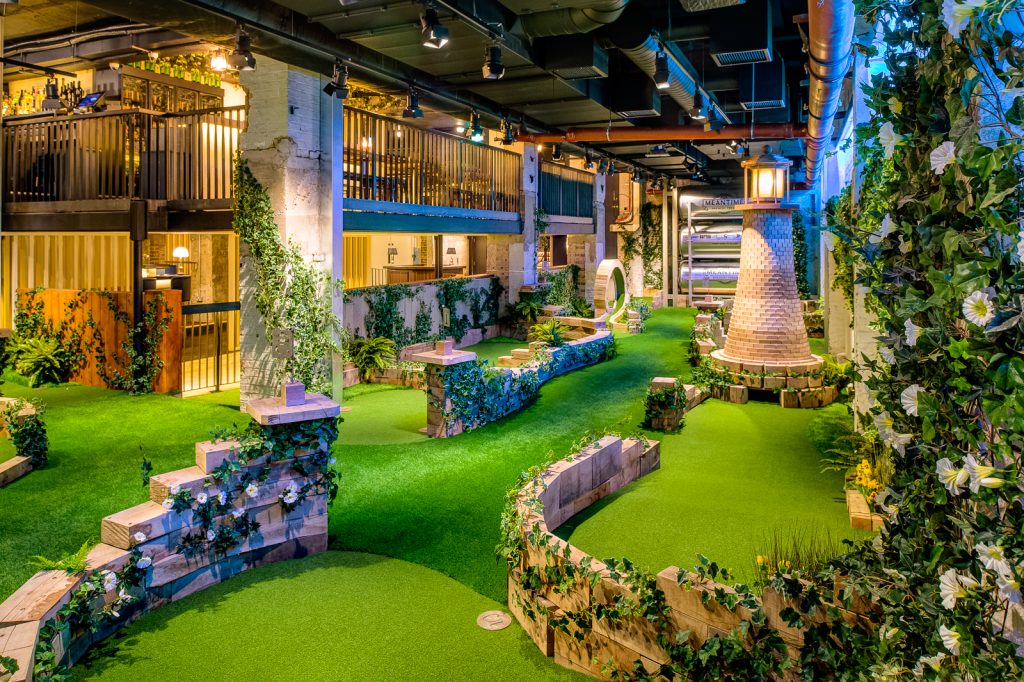
One of the OGs of the scene, Swingers’ winning combination of crazy golf, creative cocktails and street food has been upping Londoners’ first-date game since 2014, evolving from a warehouse pop-up to two permanent locations in Oxford Circus and the City of London. It now has a further two outposts in Washington DC and New York City, with more reportedly on the way.
Also see:
- Birdies, Golf Fang in the UK.
- Puttery in the US (locations in Washington, D.C., Dallas, TX, and Charlotte, NC, with more on the way in D.C., Miami, Chicago, Kansas City, New York, Philadelphia, Pittsburgh, and Houston).
- FunLab’s Holey Moley Golf Club in Australia: A Holey Moley venue consists of 18 to 27 mini-golf holes, each with a different theme influenced by pop culture and nostalgia. Holey Moley currently has 206 uniquely themed mini-golf holes that it rotates to keep its venues fresh.
2. Flight Club
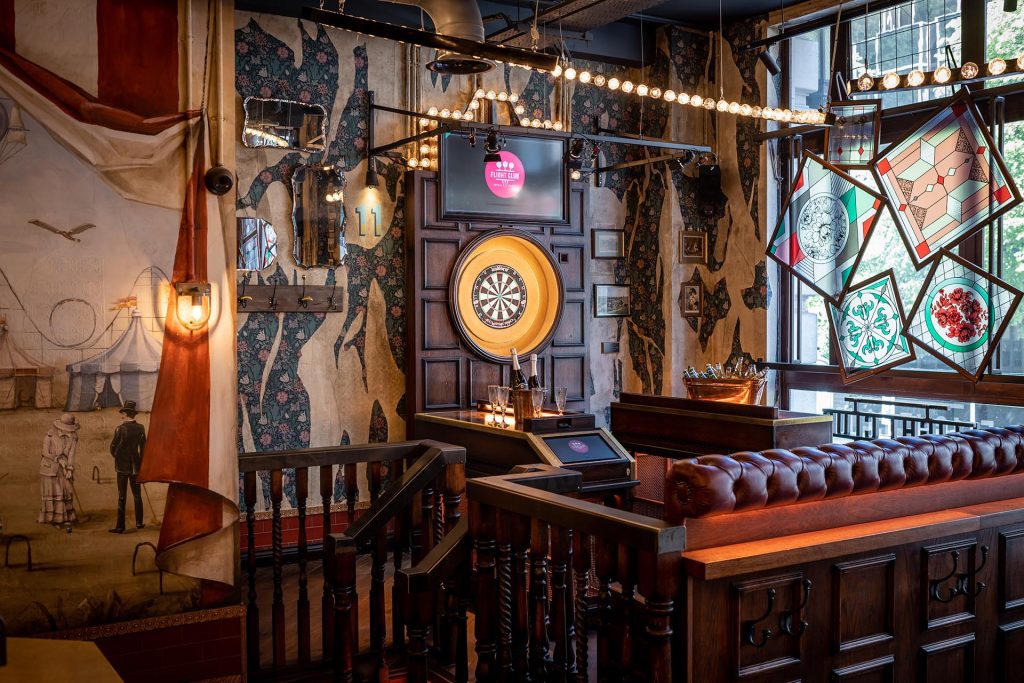
Following in the footsteps of Swingers, Flight Club started life in London as an upscale version of that most classic of pub games: darts. Unlike the sticky board you’ll find pinned up in your local boozer, Flight Club’s dart-throwing lanes feature automatic digital scoring and the ability to order yuzu guacamole with your game. A Las Vegas branch opened in the States this autumn.
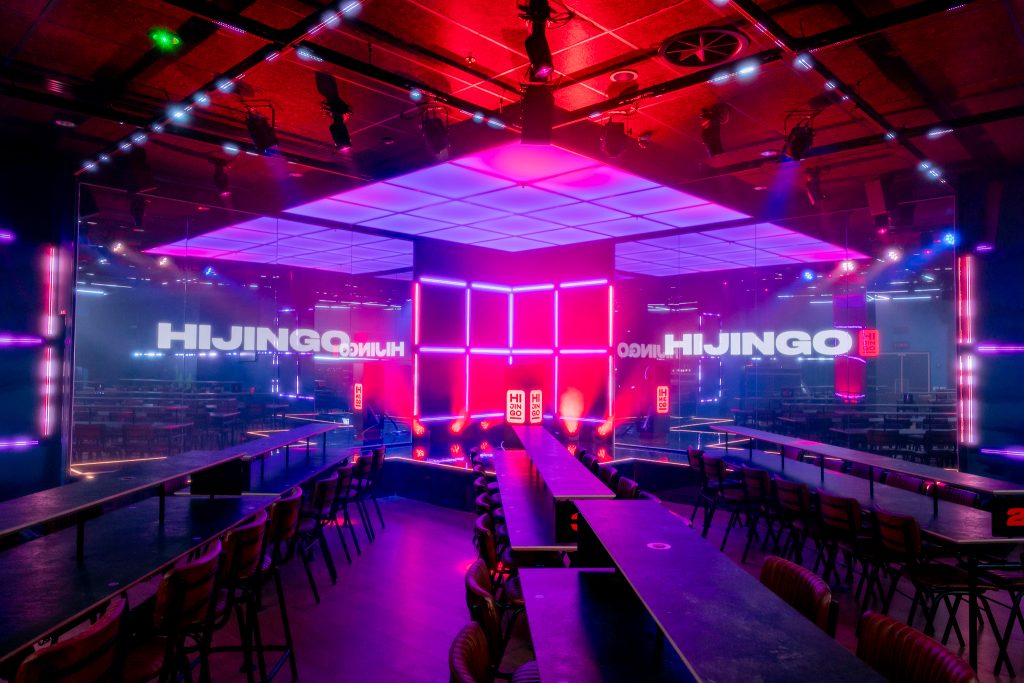
No longer the preserve of the shell-suited, bingo has been given an upgrade with the likes of Hijingo Bingo, “a multi-sensory bingo experience combining live entertainment with stadium-grade lighting, groundbreaking sonic effects and mind-blowing motion graphics.” Accessed through a cocktail bar and with an upcoming Halloween edition promising “dystopian horror bingo fun”, your nana won’t know what’s hit her. Hijingo is owned by State of Play Hospitality, who also operate Flight Club and the ping-pong bar AceBounce.
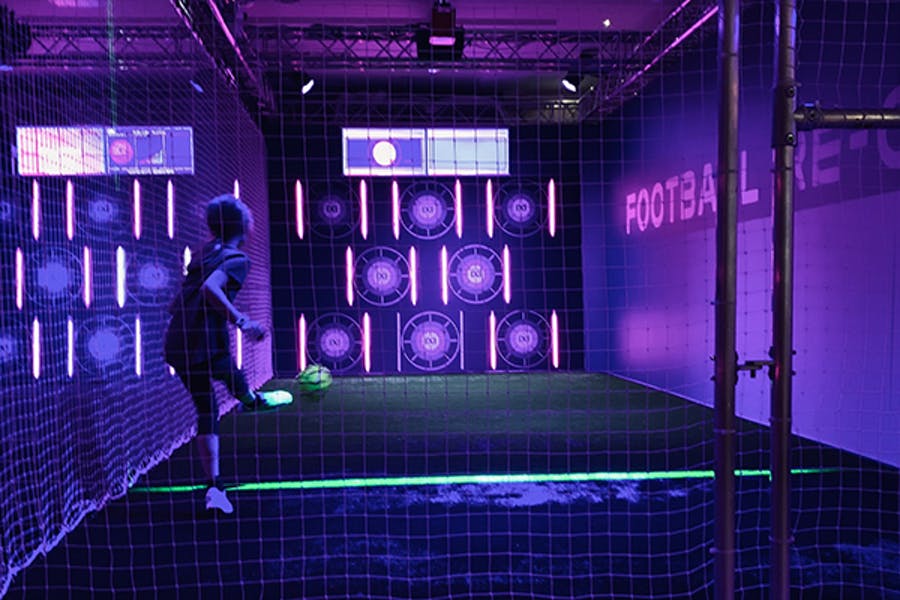
The brainchild of sport technology company (and WXO Member) WallJAM, METRIX is the first official UEFA Champions League experiential venue in Europe at Westfield in White City, featuring tech-inspired football experiences for players of all ages. Smart panel technology underpins the experience, with a range of physical and virtual game zones focused on control, technique, speed and accuracy. Harnessing the latest in AR gaming tech, the fully integrated digital experience enables players to see how they fare against all competitors through a universal scoring system.
Anther competitive socializing venues built around football / soccer: Toca Social, opened in London in 2021, opening in Dallas in 2023.
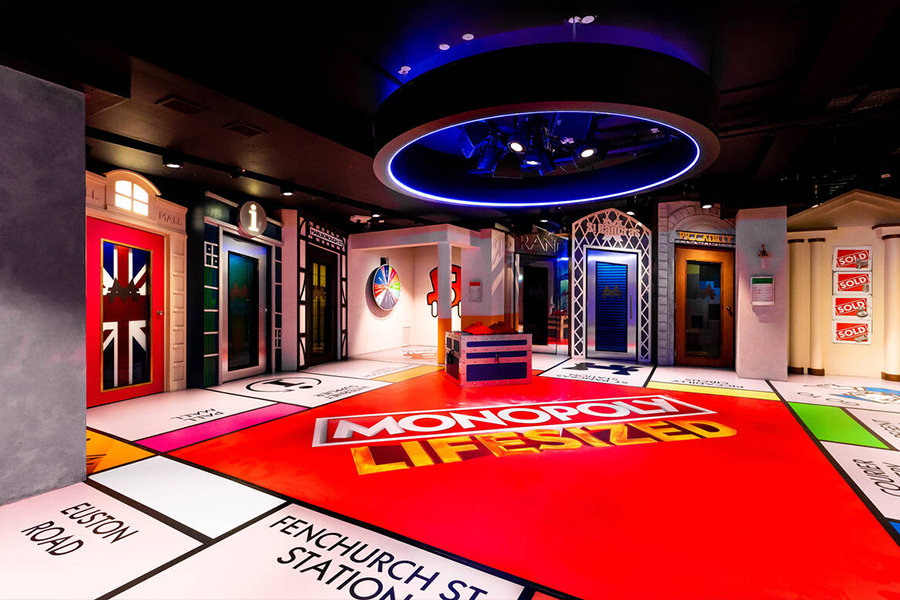
This is an immersive, on-your-feet version of the family favourite, played on a 15m x 15m life-sized Monopoly board. Players compete against the clock in a series of tasks that take place in various challenge rooms for a chance to buy properties in the capital’s plushest districts, solving murder mysteries, code-breaking and staging heists along the way.
6. Royal Palms Shuffleboard Club
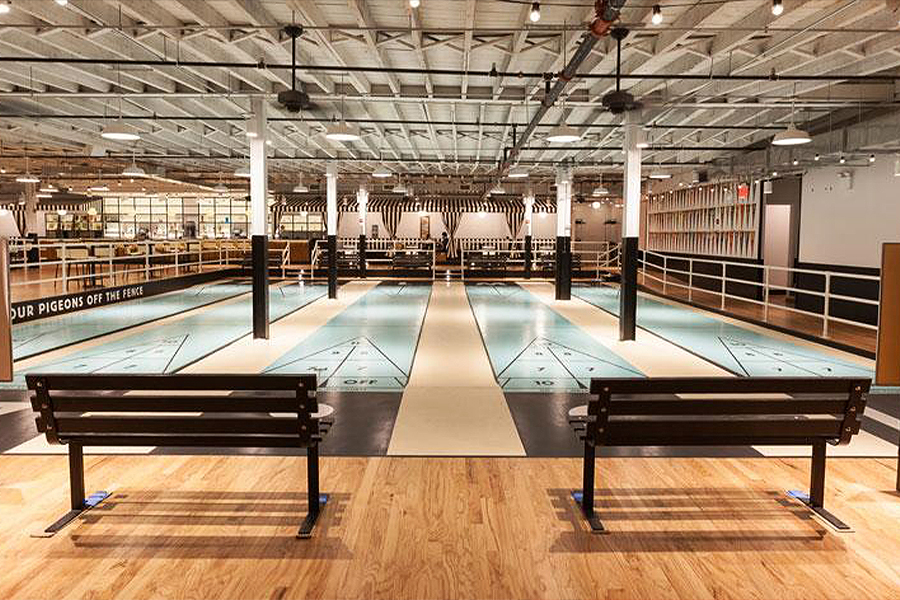
A nightclub where the thudding beats come from pucks being slammed as well as the bassline, Royal Palms reinvents the cosy game of Shuffleboard for a younger generation, with customers playing into the early hours of the morning. According to founder Jonathan Schnapp, “It’s like trying to like be the anti-nightclub in a way. Never so crowded, never so expensive, never door stress, never cover charges, never any of these things that make it so we don’t want to go out anymore.”
Now along comes Electric Shuffle with venues in London, Leeds, Austin and Dallas. They have reimagined shuffleboard as socialized gaming by redesigning the shuffleboard table to accommodate up to 24 people playing together while they eat and drink, watching one of their party play.
Just Open And Coming Soon… 5 More Examples
1. F1 Arcade
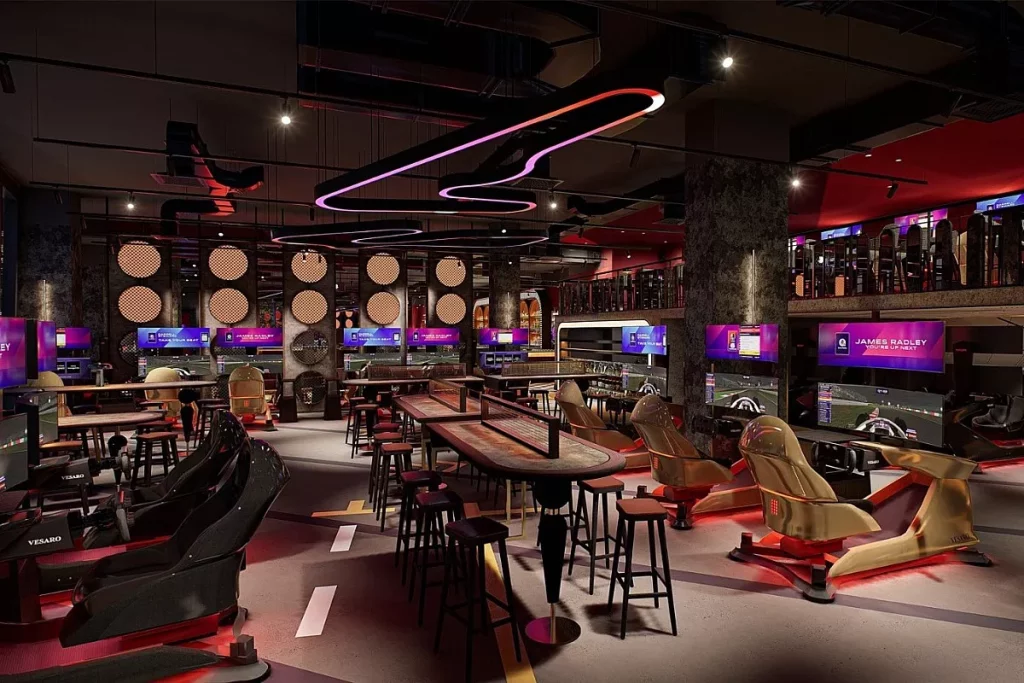
Opened in November 2022 and created by Adam Breeden, a pioneer in competitive socializing with Flight Club, Bounce, and Puttshack, F1 Arcade in London features 60 motion F1 simulators combined with food and drink offerings. The F1 Arcade venue will definitely offer competition on the simulators.
2. Fairgame
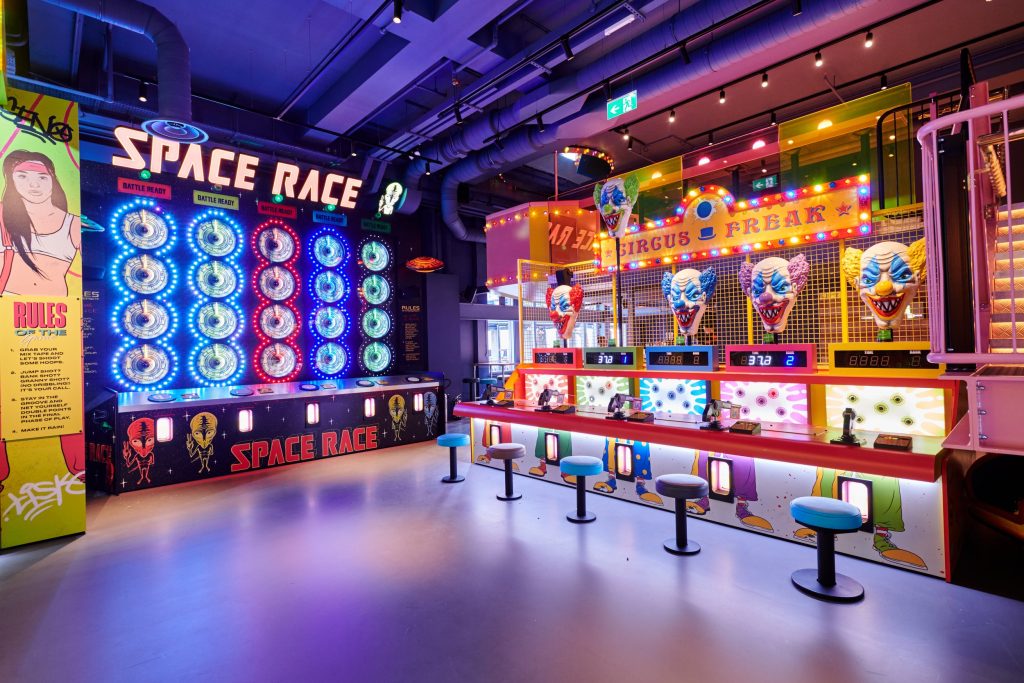
This just-opened “first-of-its-kind immersive fairground experience” is an adults-only playground where stressed City workers can cut loose after a long day in the office. Featuring fairground favourites like whack-a-mole and duck shoot, players wear RFID wristbands, allowing them to log their scores, track their performance and battle it out for a giant pink teddy. Fairgame is the brainchild of Gymbox founder Richard Hilton, who secured £5m in funding for the venture.
3. Your 3rd Spot
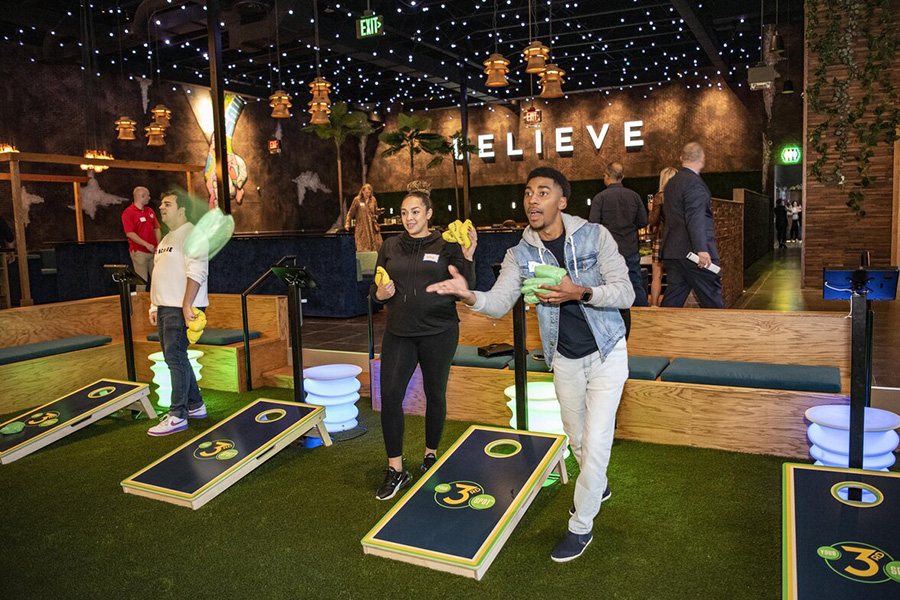
The third place, that wasn’t home or office… wasn’t that supposed to be Starbucks?
Anyhow…
Your 3rd Spot, which opened November 2022, looks a lot like competitive socializing to me, but as the owners claim, “Your 3rd Spot is NOT “eatertainment”. It is a CONNECTION venue that happens to have shareable small plates, craft beverages and curated social experiences”.
The venue includes bowling, curling, air hockey, darts, ping pong, shuffleboard, billiards, Cards Against Humanity, and table and lawn games. The 27,000-square-foot venue will include a restaurant, bar, beer garden, mezzanine, and patio.
4. Camp Pickle
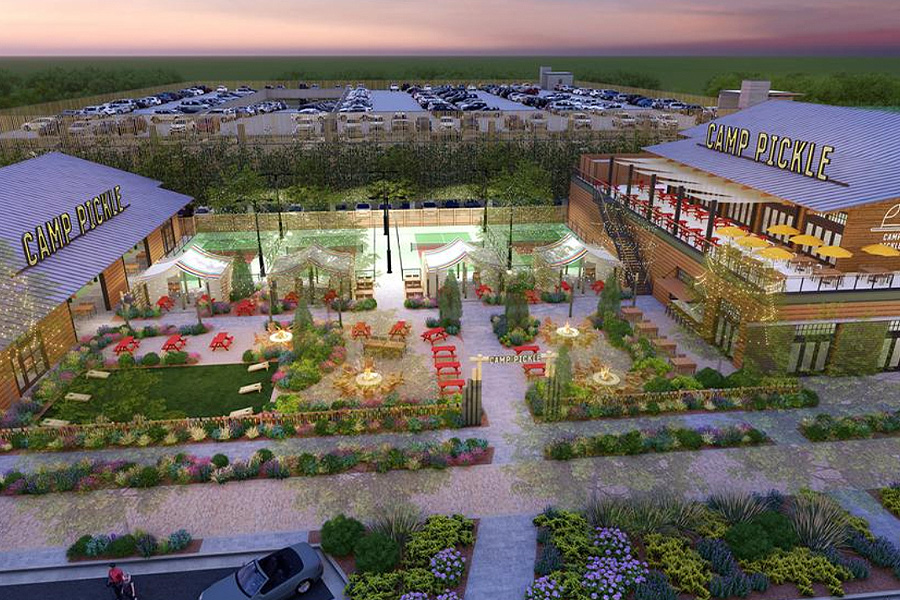
Robert Thompson, best known as the founder of Punch Bowl Social – which is very similar to Your 3rd Spot, is preparing to launch a chain of dining-and-games venues focused on the surging pickleball trend.
There’ll be theming here: Camp Pickle will feature a nostalgic “1940s national park/summer camp” motif, with a food and beverage menu designed to match.
The first Camp Pickle locations are scheduled to open in Huntsville, Alabama and Denver in 2024, with 10 more to follow by 2026.
Interesting stats from Thompson:
– corporate events will drive 35-40% of sales
– 80% of its revenue will come from food and beverages
5. Sixes Cricket
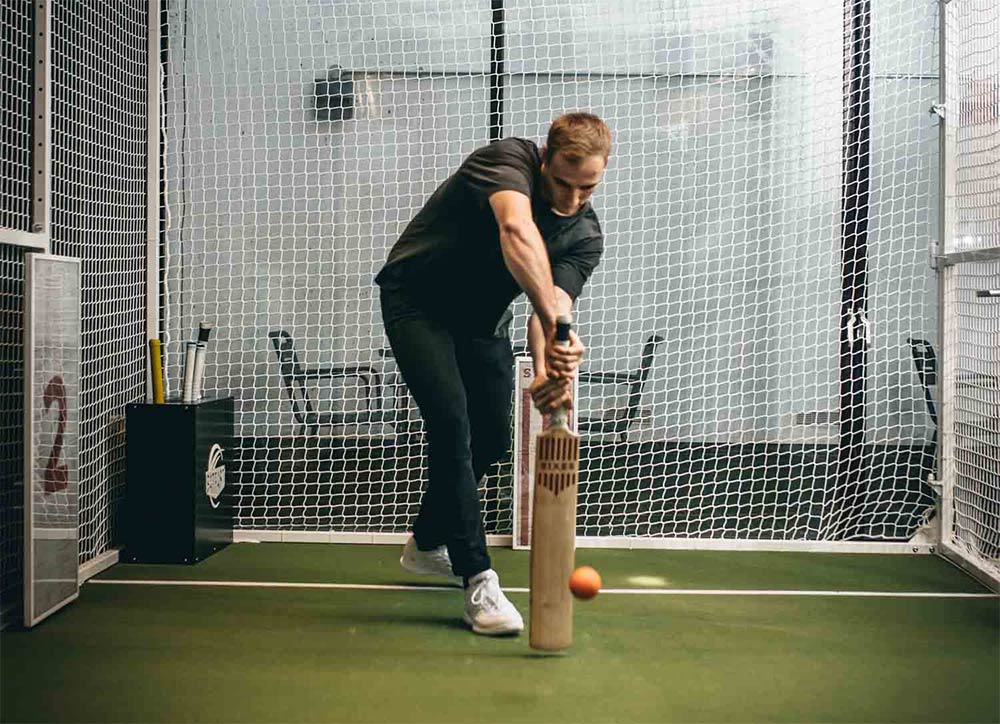
Opened in late 2020, the world’s first social entertainment cricket concept now has seven venues, including their latest at shopping mall Westfield London, which shared some stats on what people now expect and why they’re opening more competitive retail spaces:
– 59% of consumers expect more than half of retail space will be devoted to experience rather than product by 2025
– 81% of customers globally are willing to pay more for innovative retail experiences.

